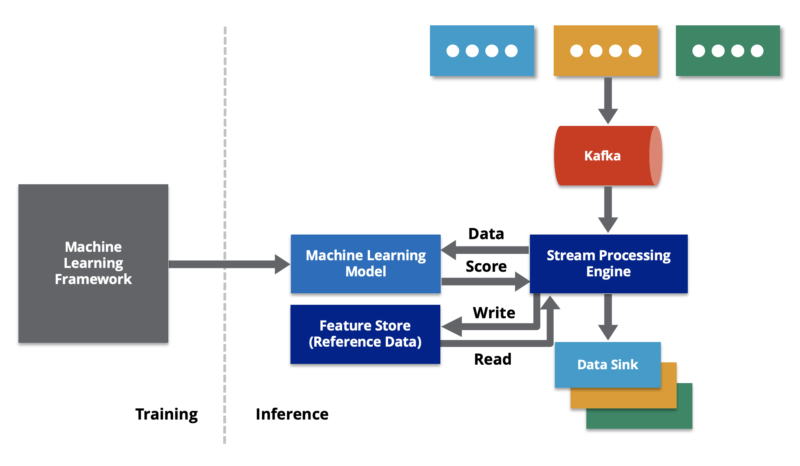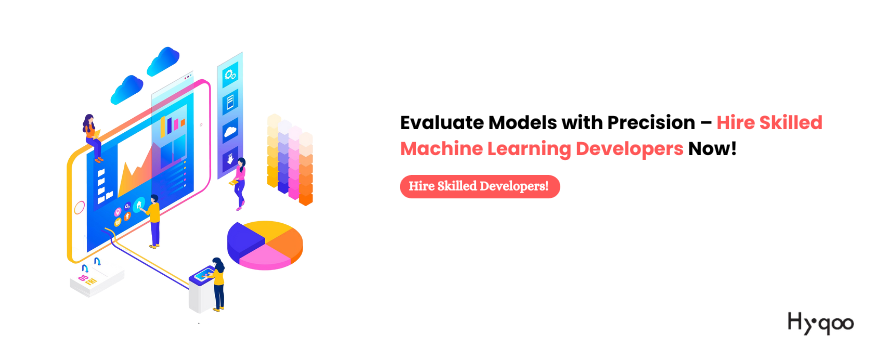12 Mins
12 Mins
Model evaluation has evolved as an important method for improving machine learning models, including LLMs (Large Language Models), performance, and ROI. It involves applying robust metrics, advanced methodologies, and tailored frameworks to ensure models deliver optimal results in real-world applications.
Model evaluation can significantly impact a model’s performance by methodically identifying inefficiencies in data preprocessing, algorithm selection, and hyperparameter tuning. The ML model evaluation framework reveals growth opportunities through feature engineering and model architecture improvements and offers predictive analytics using data trends and anomaly detection tools. This keeps the model on track with its original purpose and improves efficacy, scalability, and reliability.
However, a one-size-fits-all method of model evaluation is inefficient. Evaluations must take into account diverse applications, context-specific performance metrics, and operational adaptability. They should also assess computational scalability, ethical considerations like bias mitigation, and real-world applicability.
Adapting model evaluation to your business requirements guarantees that you will get the most out of your ML model evaluation framework and maintain its accuracy, efficiency, and dependability under dynamic conditions.
This guide offers an in-depth overview of the machine learning model evaluation framework. It emphasizes on technical metrics like log loss, Matthews correlation coefficient (MCC), and model calibration techniques, alongside standard best practices, to assist you in selecting and maintaining the models that best meet your requirements.
 Model evaluation is a critical stage in the field of Machine Learning (ML) that determines how well a trained model works with new data. It combines quantitative metrics, diagnostic visualizations, and robustness testing to assess both static and dynamic performance.
Model evaluation is a critical stage in the field of Machine Learning (ML) that determines how well a trained model works with new data. It combines quantitative metrics, diagnostic visualizations, and robustness testing to assess both static and dynamic performance. ML and LLM evaluation frameworks involve evaluating the general accuracy, precision, recall, and dependability of a model’s predictions. By assessing a model, we can learn more about its generalization capabilities, edge case performance, and robustness to out-of-distribution data to decide whether it is appropriate for practical uses.
Model evaluation methods assess a trained model’s effectiveness and efficiency. These techniques allow us to examine the model’s capacity to generalize, handle noisy datasets, and create accurate predictions on previously unseen data using advanced evaluation protocols such as k-fold cross-validation and stratified sampling.
However, understanding a model’s strengths and shortcomings allows us to iteratively adjust hyperparameters, explore alternative loss functions, and improve its deployment performance.
To evaluate a machine learning model, several metrics and methodologies are used. These metrics provide a multidimensional understanding of model performance and encompasses both predictive accuracy and operational reliability. The following classification of metrics is important for ensuring your machine-learning models remain reliable, interpretable, and adaptive to diverse tasks:
Model evaluation methods are the foundation for fine-tuning machine learning models. They promise robust performance under diverse conditions. Below are the top four techniques widely used to redefine data-driven decision-making and improve scalability in business applications:
This model evaluation technique divides your dataset into training and testing sets, often in a fixed ratio such as 70:30 or 80:20. For example, an enterprise SaaS company may train an ML model that predicts churn using 70% of its user data and verify the accuracy of the model using the remaining 30%. This method is computationally efficient and suited for quick validation but may suffer from data variance issues depending on the split.
Cross-validation splits the dataset several times, providing distinct training and test sets, as opposed to depending on a single train-test split. For instance, a B2B e-commerce platform trying to enhance its recommendation system could use k-fold cross-validation, where the dataset is split into k subsets, and the model is trained and validated k times, each time using a different subset for validation. This repeated procedure reduces overfitting risks and ensures consistent performance. It generates confidence in the model’s adaptability to unseen data.
Bootstrapping is a statistical approach that uses replacement sampling to enable repeated evaluations of different data samples. For example, a supply chain management system may employ bootstrapping to repeatedly test shipping data, simulating variations in real-world conditions. This model evaluation method is ideal for estimating confidence intervals. It helps in assessing model stability, and identifying anomalies, ensuring machine learning predictions remain reliable.
When a single machine-learning model fails to achieve the required results, ensemble approaches such as bagging, boosting, or stacking leverage several models to create more accurate and reliable predictions. For example, a B2B banking firm monitoring credit risks might combine models like Random Forests and Gradient Boosting Machines to improve risk assessment. By aggregating multiple models, ensemble methods provide robustness, reduce variance, and handle complex business realities effortlessly.
Practical implementation of model evaluation benefits greatly from the use of tools and platforms. LLM evaluation tools streamline processes, automate calculations, and provide actionable insights.
Assessing Large Language Models (LLMs) requires tailored methods that go beyond traditional metrics. LLMs face unique challenges such as context retention, hallucination, and alignment with real-world knowledge.
Continuous refinement and fine-tuning are required to sustain and improve the performance of LLMs throughout time. Here’s how to keep your machine learning models on top of their game:
Keeping your models updated and fine-tuned are critical LLM evaluation techniques for sustaining peak performance. Here are some methods in which companies use successfully evaluated and iterated models.
ML model evaluation framework may sometimes face a number of challenges, all of which have practical implications:
This occurs when test data unintentionally influences the training process. For example, features derived from the test dataset included in the training set can inflate accuracy scores, leading to over-optimistic results. Techniques like data partitioning and feature engineering audits help mitigate this risk.
This arises when certain classes dominate the dataset, leading to biased models. For example, in medical diagnosis, rare diseases may be underrepresented, resulting in poor predictions. Solutions include oversampling minority classes, undersampling majority classes, or employing techniques like SMOTE (Synthetic Minority Oversampling Technique).
When a model performs exceptionally well on training data but poorly on unseen data, it indicates overfitting. For example, complex neural networks can memorize patterns from noisy data, reducing generalization. Regularization techniques such as L1/L2 penalties, dropout layers, or early stopping are essential to counteract this issue.
Effective machine learning model evaluation is both a strategic and technical necessity. Using techniques such as error analysis, performance benchmarking, and robust evaluation frameworks, businesses can derive actionable insights from their data. With Hyqoo, your organization can accelerate AI implementation, reduce operational inefficiencies, and unlock smart data management capabilities. Whether you’re optimizing ML models or exploring advanced AI solutions, Hyqoo provides expertise to ensure your models consistently outperform benchmarks and achieve deployment success.
1. How can human feedback improve machine learning model evaluation?
Human feedback is essential in improving model evaluation. It is especially important for tasks involving natural language understanding or user interactions. Businesses can identify issues like unclear predictions or inappropriate responses by integrating real-world user feedback. This feedback loop helps align model outputs with user expectations. It assists in improving relevance, usability, and all-around accuracy.
2. What is the role of interpretability in model evaluation?
Interpretability is a relevant key to understanding why a model makes specific predictions. Tools like SHAP and LIME help visualize feature importance. It enables businesses to build trust and ensure ethical use of models. This is particularly important in industries like healthcare and finance, where explainability is important for compliance and decision-making.
3. How does data augmentation contribute to effective model evaluation?
Data augmentation enriches model evaluation by creating synthetic data to test edge cases and improve generalization. Techniques like image rotation, noise addition, or oversampling rare classes provide diverse scenarios for evaluation. They promise that models remain robust against variations in input data which leads to better performance on unseen datasets.
Share Article
Subscribe and get fresh content delivered right to your inbox

11 Mins
Low-code and no-code AI tools are transforming how organizations innovate. Instead of relying solely on large engineering teams, companies are now empowering business users and domain experts to build AI-driven applications through visual interfaces and prebuilt models. This blog explores how enterprises are adopting these tools, the benefits and risks involved, and why pairing them with expert AI talent, through platforms like Hyqoo, ensures quality, governance, and long-term scalability.
Continue Reading

4 Mins
AI is changing how teams work together, moving from a simple tool to an active driver of collaboration. But technology alone isn’t enough; businesses need the right talent to integrate AI into daily workflows and deliver measurable results. This blog explores how human-AI collaboration is redefining the workplace and how Hyqoo’s Talent Cloud Platform helps enterprises stay ahead with the talent required to make it happen.
Continue Reading

4 Mins
Engineering is entering a new era where artificial intelligence and DevOps are no longer separate practices but powerful allies. AI-DevOps hybrids are transforming how teams build, deploy, and manage software, bringing predictive insights, self-healing systems, and faster release cycles. This blog explores why the shift matters now, the real-world results companies are seeing, and how businesses can secure the right talent to stay ahead. The future of engineering is hybrid, intelligent, and already here.
Continue Reading
Subscribe and get fresh content delivered right to your inbox
Prompt Engineer
AI Product Manager
Generative AI Engineer
AI Integration Specialist
Data Privacy Consultant
AI Security Specialist
AI Auditor
Machine Managers
AI Ethicist
Generative AI Safety Engineer
Generative AI Architect
Data Annotator
AI QA Specialists
Data Architect
Data Engineer
Data Modeler
Data Visualization Analyst
Data QA
Data Analyst
Data Scientist
Data Governance
Database Operations
Front-End Engineer
Backend Engineer
Full Stack Engineer
QA Engineer
DevOps Engineer
Mobile App Developer
Software Architect
Project Manager
Scrum Master
Cloud Platform Architect
Cloud Platform Engineer
Cloud Software Engineer
Cloud Data Engineer
System Administrator
Cloud DevOps Engineer
Site Reliability Engineer
Product Manager
Business Analyst
Technical Product Manager
UI UX Designer
UI UX Developer
Application Security Engineer
Security Engineer
Network Security Engineer
Information Security Analyst
IT Security Specialist
Cybersecurity Analyst
Security System Administrator
Penetration Tester
IT Control Specialist